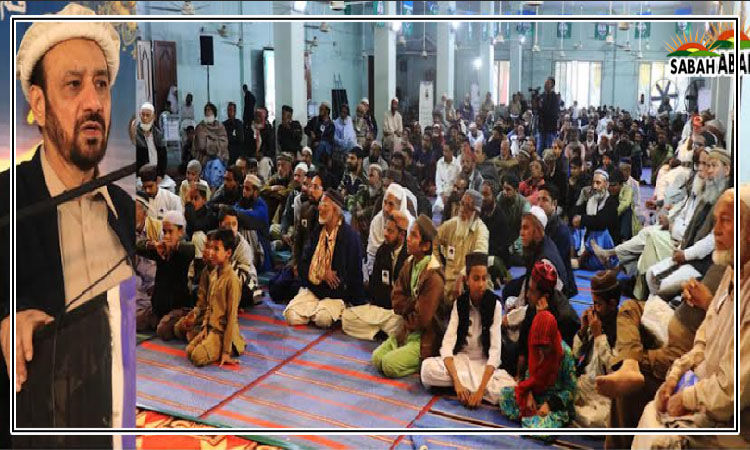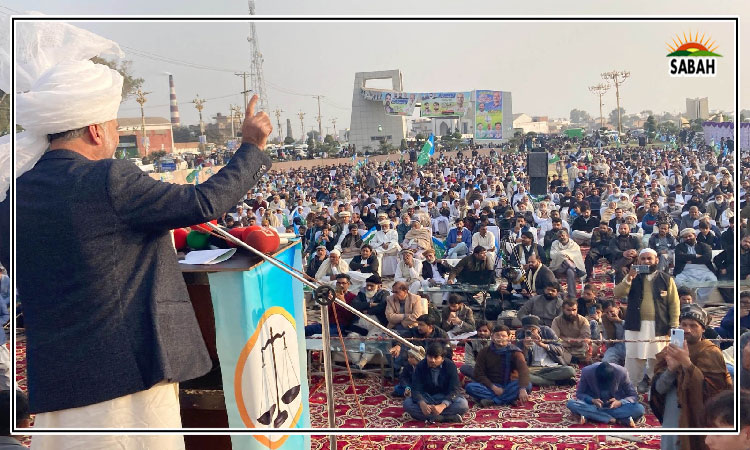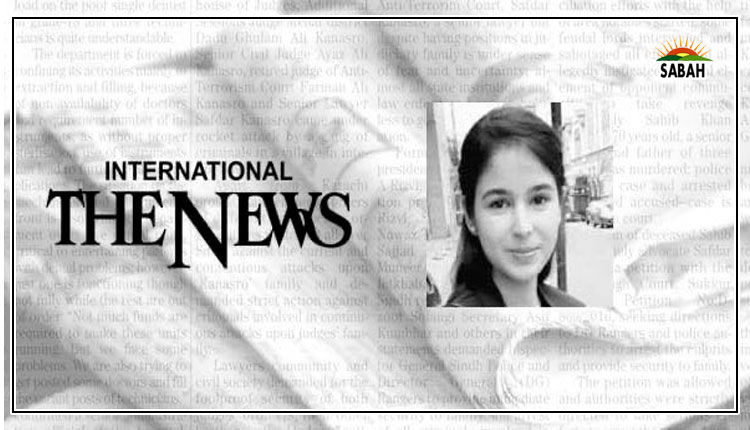It’s a biased world…Rida Tahir
Gender bias is a pervasive problem worldwide and Pakistan is no exception. Gender biased social norms can be defined as the undervaluation of womens capabilities and rights in society. This constrains womens choices and opportunities by regulating behaviour and setting the boundaries of what women are expected to do and be.
In Pakistan, men are seen in productive roles as breadwinners whereas women are seen in reproductive roles and as homemakers. Therefore, the education of the male members of the family is prioritized over the female members. This hampers womens access to equal opportunities at an early age.
The latest 2023 Gender Social Norms Indexs (GSNI) report published by the UNDP reveals no improvement in biases against women in a decade, with almost 9 out of 10 men and women worldwide still holding such biases today. These biases apply across regions, income, level of development and culture, making them a global issue. The report captures how social beliefs can obstruct gender equality in four key dimensions: political, educational, economic and physical integrity.
The report says that during 20172022, 99.89 per cent of people surveyed in Pakistan had at least one bias against women whereas 0.11 had no bias against women. There has been some improvement in biases against women in Pakistan. The report revealed that in 20102014, the share of people in Pakistan with at least one bias against women was 99.91. However, this improvement is clearly very small and a lot more needs to be done.
Gender biased social norms are a major impediment to achieving gender equality. It is relevant to mention that Pakistan remains ranked as the second-worst state in terms of gender parity, placed 145 out of 146 states in the Global Gender Gap Report 2022.
Article 25 of the constitution specifically mandates equality of citizens whereas Article 25(3) allows affirmative action by allowing special provision for the protection of women and children. Article 26 is titled non-discrimination in respect of access to public places. Article 26(2) also allows special provision for women and children.
Affirmative actions involve the introduction of policies and practices to include particular groups based on their gender, religion, etc in areas in which such groups are underrepresented. According to the World Bank, the female population of Pakistan stood at 49.5 per cent in 2021. Therefore, it is imperative that all three pillars of the government legislative, judiciary and executive take affirmative action by instituting policies to ensure equal participation of women in the political, educational, and economic areas, and to ensure the safety and health of women in terms of their physical integrity.
The Pakistan parliament has enacted several pro-women laws. These include: the Protection Against Harassment of Women at the Workplace Act 2010, which was amended in 2022; the Acid Control and Acid Crime Prevention Act 2011; the Prevention of Anti-Women Practices Act 2011; and the Anti-Rape (Investigation and Trial) Act 2021.
However, it is concerning that despite the rising number in cases of child marriages, the law across Pakistan (except Sindh, where the Sindh Child Marriages Restraint Act 2013 is applicable) discriminates on the basis of gender. The Child Marriage Restraint Act 1929 (CMRA), which is applicable in Punjab (with a few amendments regarding punishments), Balochistan, Khyber Pakhtunkhwa and Islamabad Capital Territory, is discriminatory because it prohibits the marriage of boys under the age of 18. But for girls the age is 16. This reinforces discriminatory gender roles and hampers gender equality.
When it comes to the judiciary, Justice Ayesha Malik became the first female judge of the Supreme Court in the history of Pakistan in 2022. It is important to note the Judicial Commission of Pakistan (JCP) approved the elevation of Peshawar High Court Chief Justice Musarrat Hilali to the Supreme Court earlier this month. She will be the second woman in the nations history to hold this position. It is imperative that the judiciary represents the people it serves.
The most recent example of the importance of a womans perspective in the Supreme Court is the Nadia Naz case. In a judgment authored by Justice Mushir Alam, the Supreme Court had held that the Workplace Harassment Act 2010 only covers harassment of a sexual nature: any other demeaning attitude, behaviour, or conduct which may amount to harassment in the generic sense of the word, however devastating it may be to the victim, is not actionable.
Following this judgement, the definition of harassment in the 2010 Act was amended by parliament to expressly include discrimination on the basis of gender, which may or may not be sexual in nature. However, the amendment only applies prospectively. Therefore, victims/survivors of workplace harassment from 2010 till 2022 were still subjected to the pre-amendment definition of harassment. As a result, most victims/ survivors of workplace harassment were left without a legal remedy.
Justice Ayesha Malik, in review jurisdiction, overturned and revisited this definition of workplace harassment. She stated at Paragraph 5 of the judgment: the intent and purpose behind the enactment of the Act was to address harassment at the workplace which is prompted on account of gender and was not limited to a sexual form of harassment. This judgement is an example of the urgent need to ensure womens participation in the higher judiciary in Pakistan.
Shaheed Benazir Bhutto Bibi served as the 11th and 13th prime minister of Pakistan from 1988 to 1990 and again from 1993 to 1996. She was the first and only woman to serve as prime minister. It was during her term that the UN Convention for the Elimination of all forms of Discrimination Against Women (CEDAW) was ratified by Pakistan. She was known for the establishment of women’s police stations, study centres, lady health workers programmes and the First Women Bank Ltd. Her policies were aimed at empowering women.
Women and girls in Pakistan continue to remain underrepresented across the three pillars of the government and are restricted from taking up key roles and positions due to gender biased norms. Even though Pakistan developed the National Gender Policy Framework in 2022, its non-implementation continues to deprive the country from taking advantage of womens capabilities and their potential to bring the positive change that Pakistan desperately needs.
Courtesy The News












